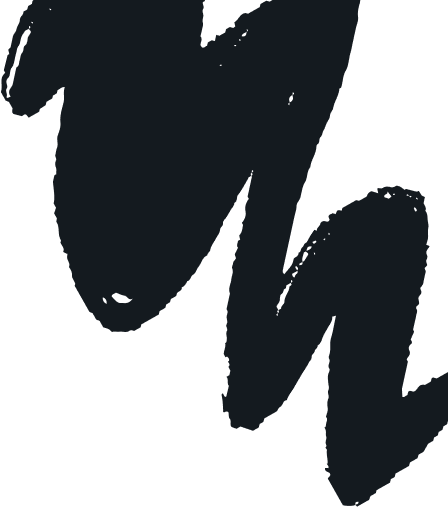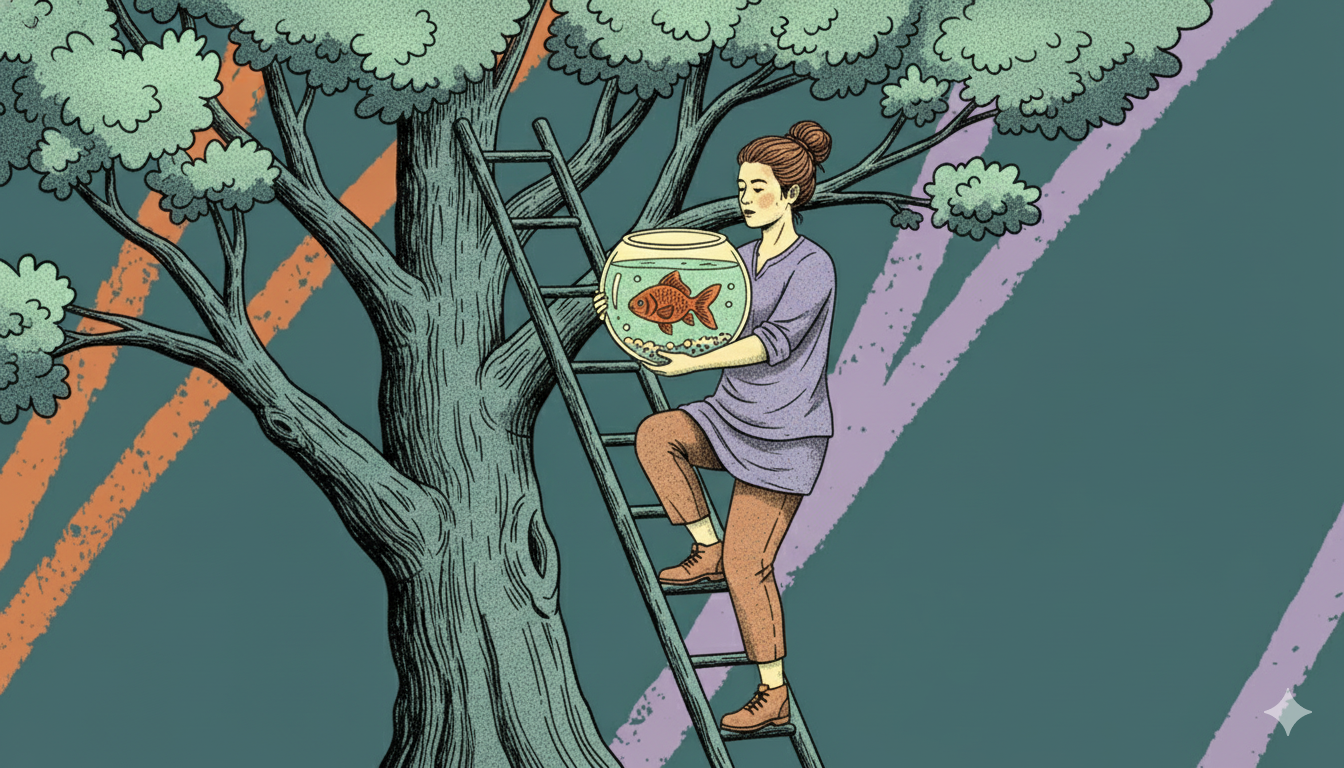Imagine you're on a game show. The host gestures to a stage, revealing three massive doors, and shouts, "It's time to choose your child's future!"
Behind Door #1 is your local school district. It's a known quantity—solid and dependable. You know what you're getting: a built-in community, a familiar structure, and no upfront cost.
Behind Door #2, you get a choice of several curated private school packages. There's the local Catholic school, the innovative tech-focused magnet school, or the quirky, nature-based forest school. Each offers a distinct philosophy and a strong community, but they come with a hefty price tag and their own set of non-negotiables.
Then there's Door #3. You push it open and find yourself standing at the entrance to a dizzying, endless hallway. A hundred smaller doors stretch out before you into the horizon, each labeled with a different curriculum, co-op, or educational philosophy. This is the homeschool option—the ultimate freedom, but also the ultimate burden of choice.
For generations, this has been the game. You pick a door, then maybe another door, and hope you've chosen wisely.
But education isn't actually a game show where you have to swear loyalty to what's behind a single door. Perhaps we need a better analogy.
Let's think of education as a kind of computer operating system.
An operating system (OS) is the foundational software that runs everything on a device. It dictates what programs you can use and how they work together. For the last 150 years, the vast majority of us have been using the same one.
The prize behind Door #1, the public school, is like a corporate PC from the 90s—it comes pre-loaded with approved software (Windows 95), it's hard to customize, and it's designed for institutional efficiency, not the individual user.
The options behind Door #2 are like niche computer brands that run a proprietary version of that same OS. And the endless hallway behind Door #3, homeschooling, has traditionally been like building your own computer from scratch—a powerful option, but only accessible to the most dedicated hobbyists.
The reason you can't easily take the math program from the tech magnet school, the nature walks from the forest school, and the literature list from a Classical curriculum is the same reason you can't run an iPhone app on a Windows PC. They were built to run on different, incompatible platforms.
The solution isn't another door. The solution is a better operating system.
This is open education. It's the modern, flexible education OS (eOS)designed for the user, not the institution. It's the platform that finally allows you to download and run the best "apps" from every tradition—Montessori, Classical, virtual, project-based—and have them all work together seamlessly on a single platform.
To see how we get to this new, open-source future, we first have to understand the story of the closed-source code we all inherited.
The Story of Our Outdated eOS
The operating system we've all been running was designed in the 1840s. Its lead architect, Horace Mann, saw a nation grappling with the chaos of the Industrial Revolution and prescribed a powerful solution: the "common school."
It was a brilliant piece of social engineering for its time. It took a diverse, scattered, and largely uneducated populace and created a scalable system to produce literate citizens and competent factory workers. Its core features—age-based grades, a standardized curriculum, bell schedules, and batch processing of students—seemed revolutionary. It was, in effect, a human assembly line.
The rigidity of this system wasn't a bug; it was the central feature. Standardization was the goal.
As Matt Bowman and Isaac Morehouse put it in the Open Education book:
"The system sorted children by manufacture date (what we now call grade levels), processed them into batches, and tested their conformity at regular intervals. Those who didn't fit the mold were labeled as troublemakers or failures."
The problem is that while every other industry has undergone relentless reinvention, the basic architecture of school has remained frozen in time. The education OS designed for the 1840s is still running on the devices of the 2020s. A doctor from 1900 would be utterly lost in a modern hospital, but a teacher from that same era could walk into most classrooms today and know what to do (assuming they could figure out how to get their pupils to put their smartphones away).
This stagnant, closed-source eOS created the walled gardens we see today. Brilliant innovators like Maria Montessori and Susan Wise Bauer created incredible new approaches to learning, but to use them, families felt like they had to go all-in. These philosophies became their own isolated ecosystems because the mainstream system was too rigid to accommodate them.
The Great Unbundling Begins
For decades, the system chugged along. But in the 21st century, the cracks began to show.
The internet was the first major shock to the system. Suddenly, world-class expertise was no longer confined to a single building. The "unbundling" began as families realized they could get a better math component from Khan Academy or a more engaging history class from an Outschool teacher. The monolithic bundle of "school" started to come apart.
As education researcher Michael Horn observed, we are seeing "a gradual move away from the one-size-fits-all model of schooling toward more personalized, à la carte educational options."
Starting in the 1960s, pioneering parents rediscovered home-based learning. It was mostly illegal until court victories throughout the 1980s made it safe, but still fringe. These early homeschoolers created networks, newsletters, co-ops, sports leagues, conferences, and publishing houses. They showed a different way was possible.
By the early 1990s, homeschooling had grown from 250,000 students in the 1980s to over 1 million. Today, there are approximately 3.5 million homeschooled students in the U.S.—and the definition of "homeschool" keeps expanding.
Then came the pandemic, the single greatest stress test the system had ever faced. For millions of parents, it was the moment their old eOS finally crashed.
The numbers tell the story. Public school enrollment dropped by 1.2 million students across thirty-seven states. Homeschooling grew by about 1 million during that same period. Parents everywhere had the same realization: Wait, I can do this?
Kerry McDonald, a leading voice in alternative education and the author of Joyful Learning, explains: "Remote learning gave parents an up-close view of what was actually happening in their students' classrooms... A lot of the parents and founders that I've talked to said, 'Hey, I can do this. This isn't rocket science.'"
The pandemic didn't create dissatisfaction with traditional schooling—parents had been frustrated for years. What it did was fulfill the third condition necessary for change: belief in your ability to create something better. Parents discovered their kids could take weeks off from formal learning without falling behind—a revelation that challenged everything they'd been told about educational necessity.
Tyler Thigpen, founder of The Forest School (an Acton Academy), explains what remote learning exposed: "You've got a learner in a classroom for 12 years plus, and they are having to follow rules they didn't make and listen to answers of questions that they didn't ask… [I]f you do that for enough time, what does it do to you? What does it do to your spirit?"
He calls it "the epidemic of dependent learners"—students who've been trained to wait for adults to tell them what to do, what to learn, when to learn it. The pandemic made this dependence impossible to ignore.
Something else has changed too. When our kids were young and we told people we homeschooled, they'd look at us like we had two heads. Today, the most common response is: "I wish I could do that."
The Overton Window—what society considers acceptable—has shifted dramatically. What was once fringe is becoming mainstream.
The New eOS—Open Education & the Platform for Everything
We are living through what could be called the "iOS moment" for education.
In the same way that the iPhone was not merely an upgraded iPod mp3 player, open education is not another competing program or philosophy. It is a new operating system. It is the clean, flexible, user-centric platform designed to finally run all the best programs together. Its core design principle is interoperability.
This new eOS fundamentally changes your role as a parent/educator. You are no longer a passive consumer forced to use the pre-installed software. You become the architect of your child's learning journey, with the power to create a personalized "home screen" of educational experiences.
On this new platform, you can place the "Montessori app" for hands-on, self-directed learning in the early years right next to the "Classical literature app" for building a foundation in the great books. You can run a "Beast Academy app" for conceptual math while simultaneously accessing a "Forest School co-op app" for real-world science. They all work together because the underlying operating system is built for flexibility, not rigidity.
The first page of the Open Education book features a real anecdote about a teenage girl who was asked whether she was homeschooled, whose difficulty answering the question illustrates this concept in practice.
She played volleyball on a club team and took a science class at the local public school, but the core curriculum was delivered via online courses from a virtual charter school. She participated in a homeschool co-op once a week, had a tutor for math, worked part-time, and mostly "unschooled" on Fridays.
What would you call this? She didn't know either. But she knew she loved it.
As Kerry McDonald observes, traditional educational categories are becoming increasingly difficult to define. "Even before 2020, families were blending approaches," she explains. "People would ask, 'Wait, you're a homeschooler, but you attend this school five days a week?' The overlap and fluidity around these definitions has been growing for years."
This blurring of boundaries is a positive development. While it may create challenges for educators and researchers trying to categorize these approaches, McDonald emphasizes what matters most: "As a parent in the trenches, I don't care what you call it. I just need to have all the tools available on the table."
The focus shifts from fitting into predefined categories to accessing whatever resources best serve each child's needs.
Real Examples of the New eOS in Action
The move to open education often begins with a simple realization: the traditional schedule isn't sacred. Former public school principal and Libertas Institute analyst Jon England and his wife found a local microschool that operates just three days a week. "It is amazing how much of a difference that one change alone makes," he explains. The open approach allows for the structure they want and the family time they need.
Consider Breakout School in Utah, a program that spends 80-90% of its time outside and is specifically designed for students with autism and ADHD. Students who hated traditional school are now thriving. As England describes it, these kids can "run over to a playground or run around the park and get their energy out and then come back and buckle down and do 15 more minutes of math."
The founder, Dr. Dow Richardson, calls their challenges "their superpower." Students return to traditional high schools "getting A's and B's and they're loving it because now all of a sudden they found their love of learning by having this program that fit who they were."
Technology enables this flexibility. As Kerry McDonald notes: "Now we're able to tap into such extraordinary, in some cases, free or low-cost software, like Khan Academy... That just makes these unconventional spaces able to do what they're going to do."
Even a one-room schoolhouse model can access world-class instruction in every subject. The innovation isn't the technology itself—it's using technology to enable the human connections and personalized support that actually drive learning.
The Architect's Toolkit—Building Your Open Education
This new approach is about more than just technology. When you adopt an Open eOS, your "app store" contains the entire world. The architect's toolkit allows you to integrate:
- World-Class Digital Tools: The best online curricula, adaptive learning platforms, and specialized virtual classes from across the globe.
- Local Community Resources: The hands-on science co-op that meets at the park, the robotics club at the local library, the theater program downtown.
- Real-World Experiences: An apprenticeship with a local mechanic, a project-based quest to build a community garden, a deep dive into family history through travel.
- Hybrid Models: Public school for some subjects, homeschool co-ops for others, online courses for advanced topics, part-time enrollment where it makes sense.
The true power of this new eOS is the ability to re-bundle these components into a coherent, personalized philosophy that evolves as your child grows. You are no longer just picking a program; you are building a custom suite of tools designed for a specific user: your child.
This is the "no-code" revolution for education: you no longer need a teaching credential or specialized expertise to build something amazing, just the right tools and support.
The OpenEd Marketplace and Resources
This isn't a DIY fantasy accessible only to the wealthiest families or the most dedicated pioneers. The OpenEd program provides the essential infrastructure that makes being an architect feel empowering, not overwhelming. This year, we launched a new streamlined platform that makes it easier than ever for parents to build a well-rounded schedule, track progress, course correct when a given curriculum isn’t working, and get support from an accredited teacher when they need it.
The OpenEd Marketplace makes it easy to browse hundreds of vetted learning resources, curricula, classes, and experiences. Think of it as the App Store for your new education OS—curated, reviewed, and designed to work together.
For those outside of our program states, the OpenEd Daily aims to deliver daily inspiration, practical tips, and stories from families who are making this work. Our deep dives explore different pedagogical approaches—Classical, Montessori, Waldorf, Unschooling, and more—not as competing ideologies, but as tools in your toolkit.
We’ve begun organizing these resources within a new central 'Open Education' hub where you can explore different approaches, compare philosophies, browse tools, and start drafting the blueprint for your child's unique journey. It's where you begin to see all the pieces and how they might fit together.
Your Permission Slip to Design
Whether you're fully enrolled in OpenEd programs or just exploring ideas, these resources help you think like an architect.
You don't have to have it all figured out today. You just need to take the first step: opening your mind to the possibility that your child's education can be different.
Maybe you've been feeling for a while that something isn't working. Maybe you've dismissed those feelings because you thought you had no choice. Maybe you've wondered if you're qualified to make these decisions.
Here's what we know from working with thousands of families: You are more qualified than anyone to make these decisions for your child. You know them better than any system ever could.
The era of being locked into a single, rigid system is over.
With a new operating system, you have permission to take what works, leave what doesn't, and build something better.
Explore Classical, Montessori, Virtual, and Microschooling (with more coming soon!)—not as competitors, but as components in your toolkit: OpenEd.co/open-education
Subscribe to The OpenEd Daily
Join 17,000+ families receiving curated content to support personalized learning, every school day.
.webp)
.png)
.avif)




